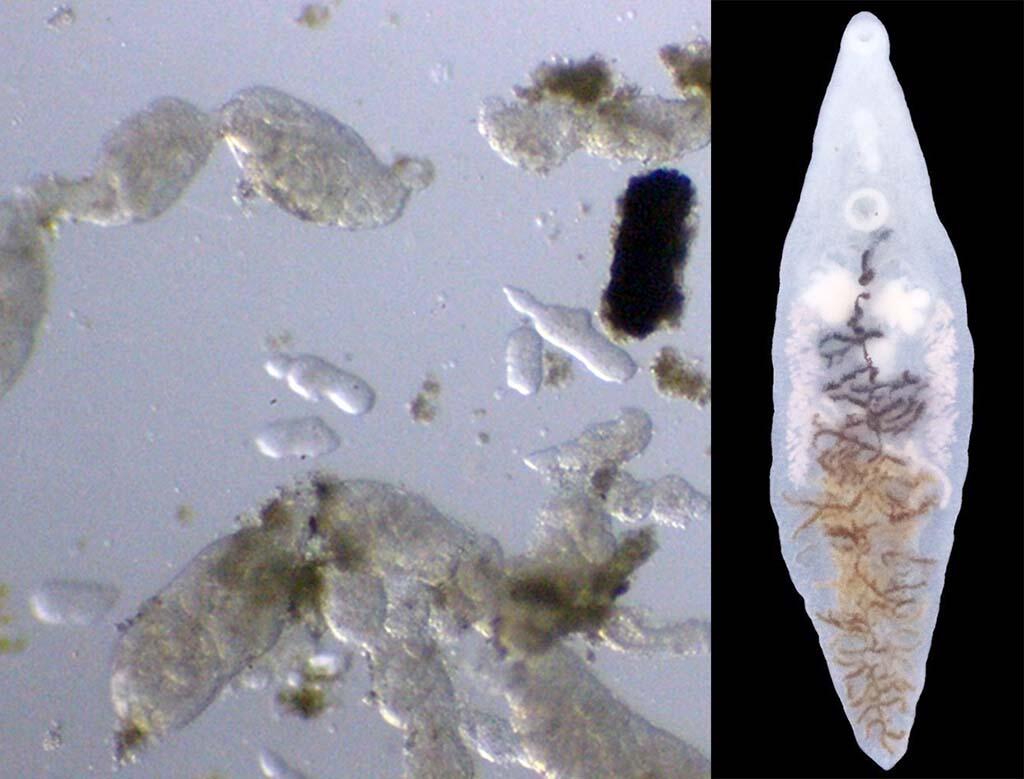Dicrocoelium chinensis, a species of parasitic fluke listed in various textbooks in Japan, is important for the livestock industry, infecting domestic animals, such as cattle. However, the route of infection through intermediary hosts in Japan was not fully understood. As the parasite was experimentally shown to infect Cionella lubrica, a species of snail, it has been thought to infect livestock via C. lubrica and ants. However, the parasite has not actually been detected in snails or ants in the field. Another confounding point is that wild animals, such as sika deer, are infected with D. chinensis at a high rate, even in areas where there are few C. lubrica. This has meant that the actual route of infection in the field is unknown.

and adult Dicrocoelium chinensis found in Japanese sika deer (right)
Credit: Toho University
The research group comprising Lecturer Tsukasa Waki of Toho University, Postdoctoral Fellow Yuma Ohari of Hokkaido University, Assistant Professor Kei Hayashi of Okayama University of Science, Associate Professor Yasuhiro Takashima of Gifu University, Associate Professor Junji Moribe of Gifu University, and Visiting Veterinary Professor Kayoko Matsuo of Kumamoto Prefectural Aso Public Health Center discovered the larvae of D. chinensis in the field in Japan for the first time. Their findings were published in the Journal of Veterinary Medical Science.
The research group sampled 269 snails of 14 species in Gifu Prefecture to examine whether they were infected with fluke larvae. Although they obtained fluke larvae (sporocysts) from 6 snails of 2 species, it was difficult to identify species of fluke by larval morphology alone. To clarify further, they extracted DNA from the obtained larvae to determine a partial nucleotide sequence of the cytochrome c oxidase subunit 1 gene. Identification of species using DNA barcoding based on the sequences revealed that the nucleotide sequence of the larvae infecting Aegista vulgivaga, one of the examined snail species, was highly homologous to that of D. chinensis, indicating that the larvae were D. chinensis.
Lecturer Waki said, "Aegista vulgivaga inhabits various parts of the central region of Japan. If fully mature larvae are detected from this species of snail, we may be able to confirm that Aegista vulgivaga is the main source of infection. We plan to continue the investigation in the future."
This article has been translated by JST with permission from The Science News Ltd.(https://sci-news.co.jp/). Unauthorized reproduction of the article and photographs is prohibited.




